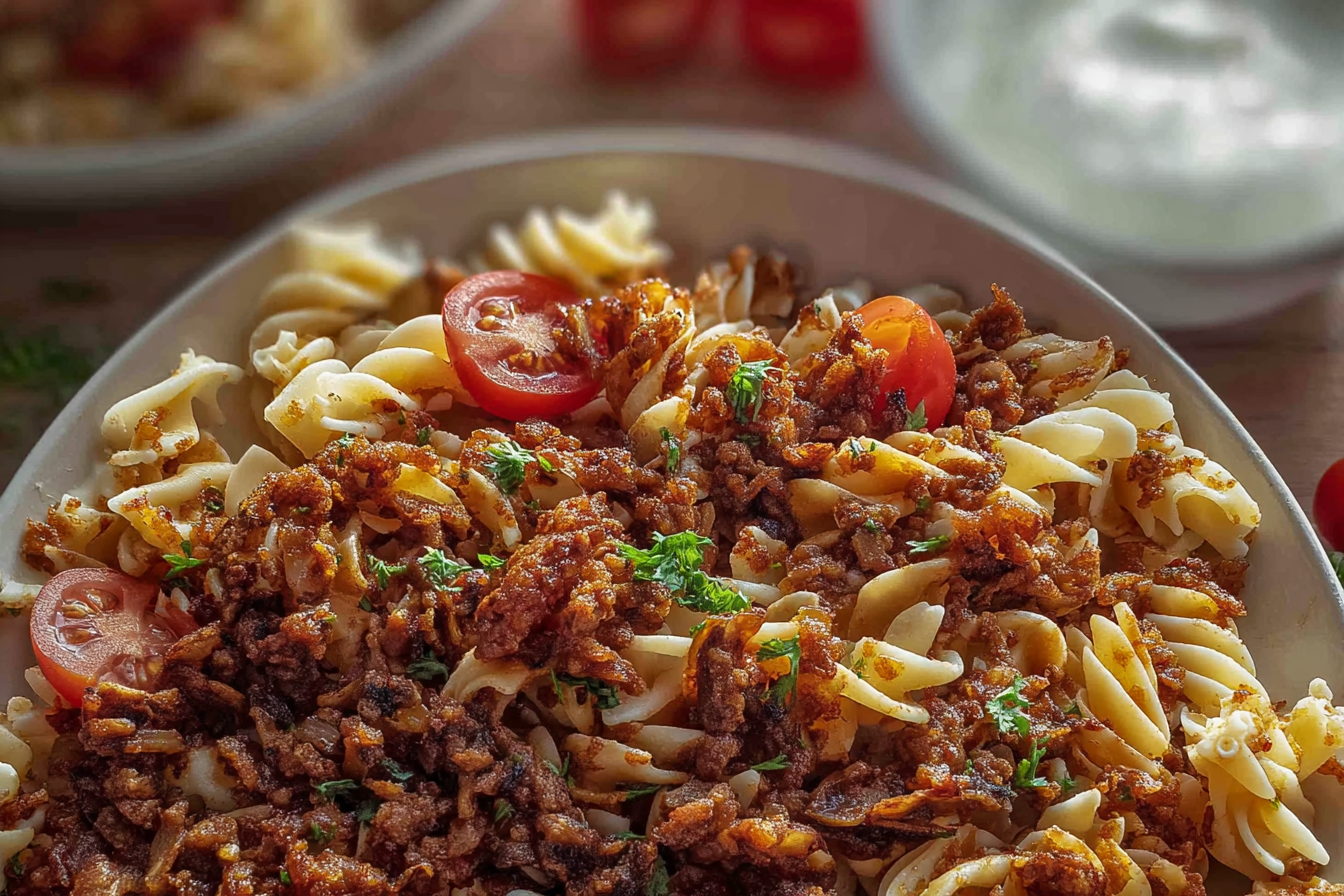Turkish pasta recipe—a phrase that instantly sparks curiosity, nostalgia, and maybe a little hunger—marks the start of countless memorable meals. Turkish pasta, celebrated from Istanbul to New York, bridges cultures and generations. It combines the comforting richness of Mediterranean flavors with vibrant spices, cool yogurt sauce, and the warmth of a shared table. As you step into the world of Turkish pasta, you’ll discover why this dish continues to win hearts around the globe. Our journey at Delice Flash began with a simple love for authentic flavors and a curiosity for global comfort food, which led us to craft and perfect this Turkish recipe. For the full backstory, visit our About page, where we share the inspiration and family moments that transformed our approach to food.
Turkish pasta isn’t just a trend; it’s a dish with history, a TikTok sensation, and a staple at family gatherings. In this article, you’ll explore the origins of Turkish pasta, learn what makes it so irresistible, and master the ultimate Turkish pasta recipe, from ingredient prep to serving tips. Along the way, you’ll find answers to all your questions, discover “Turkish pasta TikTok” hacks, and meet its famous cousin, Turkish manti. Whether you’re a curious cook or a Turkish food lover, get ready to bring a taste of Turkey to your table.
Learn more about authentic world flavors and discover recipes like Turkish manti by visiting our authentic world flavors collection.
Table of Contents
Table of Contents
The Origins and History
The Story Behind Turkish Pasta
The roots of this beloved dish reach deep into Anatolia and Central Asia, woven through centuries of migration, trade, and culinary exchange. At its heart lies manti—Turkey’s signature dumpling—featuring delicate parcels of dough filled with savory meat, then dressed with tangy yogurt and a vibrant butter sauce. The earliest versions likely emerged along the ancient Silk Road, where traveling merchants and settlers shared their techniques for making noodles and dumplings, creating what would become a staple on Turkish tables.
In modern kitchens, cooks honor both tradition and creativity. Some still roll out fresh dough for special occasions, while others turn to pre-made pasta for everyday meals. From the intricate folding of classic manti to the viral, weeknight-friendly “pasta TikTok” variations, there’s endless room for experimentation. Social media has breathed new life into these old flavors, bringing time-saving hacks and inventive presentations to a worldwide audience and showing how Turkish culinary heritage evolves while staying rooted in family and comfort.
Whether you’re exploring the manti tradition or just starting with a quick “Turkish pasta recette” you saw online, the experience is always about more than the food. Each family has its secret version, but all share the same essence—a comforting mix of savory notes, tang, and aromatic spices.
Discover great ideas like these at Myriad Recipes.
Historical Influences and Modern Variations
Long before Italian spaghetti took the world by storm, Turkey had its own noodle dishes. Regional influences brought egg noodles, dumplings, and stuffed pastas into the Turkish kitchen. Over generations, local ingredients—like sweet paprika, mint, tomato paste, and chili flakes—turned these borrowed ideas into distinctly Turkish classics. Manti, often reserved for celebrations, showcases meticulous dumpling-folding skills and a taste that’s deeply nostalgic. Even the simplest weeknight noodle dish reflects this history, especially when it’s finished with tangy yogurt and fragrant melted butter.
The modern era has sparked new trends. Viral videos, especially on TikTok, have made these dishes more approachable than ever, inspiring cooks of all backgrounds to try everything from skillet versions to layered casseroles. Today’s home chef can choose between labor-intensive classics or speedy adaptations, but the soul of Turkish cooking—flavorful, generous, and meant to be shared—always shines through.
What Is Turkish Pasta Called?
Names, Regional Differences, and Synonyms
Ask around Turkey and you’ll hear a range of names. The word “makarna” broadly covers all kinds of pasta, while “manti” points to the tiny, meat-filled dumplings most associated with Turkish home cooking. In various regions, you’ll encounter hand-cut noodles called erişte or strips known as kesme, and even manti soup. There’s no single answer—each area, and sometimes each household, adds its own twist.
If you’re searching recipes online or scrolling through social feeds, you’ll find everything from cheesy baked noodles to dumpling casseroles. What unites them all is a focus on family, togetherness, and an unwavering love for straightforward, quality ingredients.
Cultural Context and Popularity
Recently, Turkish-style pasta dishes have exploded in popularity, fueled by eye-catching social videos and TikTok trends. Quick how-tos, folding hacks for manti, and creative sauce combinations are introducing these time-honored recipes to new audiences every day. This growing visibility speaks to the Turkish ethos—fresh ingredients, generous hospitality, and always a seat at the table for one more.
Even if you’re a complete beginner, step-by-step manti tutorials and TikTok pasta tricks make it easy to join the movement. Try following along with detailed guides like those at Maja’s Recipes for more inspiration.
The Secret to Why Turkish Pasta Is So Good
Unique Ingredients and Seasonings
Ask anyone who’s tried it—Turkish noodle dishes stand out for their bright, aromatic flavors. Instead of plain tomato or cream, you get a savory blend of ground meat, caramelized onions, sweet paprika, and a swirl of rich tomato paste. Mild chili and pepper paste provide warmth, while mint and parsley keep every bite fresh and light.
Yet, the real game-changer is the finishing touch: a garlicky yogurt sauce that cools and balances, and a sizzling butter infused with herbs and spices poured over the top. This interplay of tangy, creamy, and savory flavors is a big reason these recipes keep going viral and winning over new fans.
Turkish Cooking Methods: What Sets It Apart?
While some cuisines keep things simple, Turkish pasta dishes are all about the layers. Pasta is boiled until just right, then blanketed with the savory beef mixture. Yogurt sauce comes next—cool, velvety, and lightly garlicky. Finally, hot, spiced butter is drizzled on top, fusing everything together in a dramatic, fragrant finish.
There’s a social aspect, too: everyone gets to build their own plate, customizing the ratio of sauce, beef, and garnishes. For a fresh twist, try adding roasted tomatoes or swapping in dill for mint—these dishes are designed to adapt and evolve, just like the families who cherish them.
Print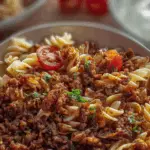
Best Turkish Pasta Recipe – Easy, Flavorful, and Comforting
- Prep Time: 15 minutes
- Cook Time: 25 minutes
- Total Time: 40 minutes
- Yield: 4 servings 1x
- Category: Main Course
- Method: Stovetop
- Cuisine: Turkish
- Diet: Halal
Description
Turkish Pasta is a savory fusion dish featuring seasoned ground beef, tangy garlic yogurt sauce, and a spiced butter drizzle, all served over tender pasta and finished with fresh herbs and tomatoes.
Ingredients
- 8 ounces pasta of choice
- 1 pound lean ground beef
- 2 tablespoons onion powder
- 2 medium yellow onions, diced
- 1 tablespoon tomato paste
- 2 teaspoons sweet paprika powder
- Salt and pepper to taste
- For the Butter sauce:
- 1/4 cup unsalted butter
- 2 tablespoons olive oil
- 1 teaspoon dried mint or fresh
- 1 tablespoon sweet paprika (not smoked)
- 1 tablespoon mild pepper paste
- 1 teaspoon Turkish chili flakes or regular chili flakes
- For the yogurt sauce:
- 1 cup Greek yogurt or plain yogurt
- 2–3 small garlic cloves, minced
- Salt and pepper to taste
- To Garnish:
- 1/4 cup minced parsley
- 1/2 cup cherry tomatoes, diced
Instructions
- Cook the pasta according to package directions; drain and set aside.
- In a large skillet over medium heat, cook the ground beef until almost cooked through (2-3 minutes), letting it release its natural oils.
- Add the diced onions, onion powder, sweet paprika powder, tomato paste, salt, and pepper. Mix and cook until the onions are translucent (about 3 minutes). Remove from heat and set aside.
- For the butter sauce: In a small saucepan over low heat, melt the butter. Add olive oil, mild pepper paste, dried mint, sweet paprika, and chili flakes. Mix to combine and heat for about 1 minute. Set aside.
- For the garlic yogurt sauce: In a bowl, mix Greek yogurt, minced garlic, salt, and pepper. Thin with 2-3 tablespoons water if needed.
- To assemble: Place pasta on plates. Top with yogurt sauce, then beef mixture, then drizzle butter sauce over everything. Garnish with minced parsley and diced cherry tomatoes. Serve immediately.
Notes
- Use Turkish pepper paste for authentic flavor, or substitute with mild red pepper paste.
- Adjust chili flakes for preferred spice level.
- Use any short pasta shape for best sauce coverage.
- Prepare all sauces ahead of time for easy assembly.
Nutrition
- Serving Size: 1 bowl
- Calories: 580
- Sugar: 7g
- Sodium: 530mg
- Fat: 29g
- Saturated Fat: 11g
- Unsaturated Fat: 16g
- Trans Fat: 0g
- Carbohydrates: 50g
- Fiber: 4g
- Protein: 31g
- Cholesterol: 75mg
Is Turkish Pasta Healthy?
Nutritional Value and Balanced Ingredients
Though it feels indulgent, this comfort food delivers real nourishment. Greek yogurt adds protein, calcium, and gut-friendly probiotics. Lean meat brings protein and iron, while onions and cherry tomatoes add fiber and antioxidants. Olive oil and butter provide healthy fats, and switching to whole wheat noodles can bump up your fiber intake.
A quick nutrition snapshot:
| Ingredient | Benefit |
|---|---|
| Ground beef | Protein, iron |
| Onions & tomatoes | Fiber, vitamins, flavor |
| Yogurt | Protein, probiotics |
| Olive oil & butter | Healthy fats, richness |
| Pasta | Carbs, energy |
Comparing to Other Pasta Dishes
Compared to the heavy cream and cheese-laden fare you might expect, Turkish-style pastas are lighter and easier to digest. The yogurt sauce means less saturated fat, and more nutrition in every forkful. Want it even lighter? Substitute beef with turkey or use a plant-based alternative, and double the veggies for a wholesome, vibrant meal.
Is Turkish Pasta Spicy?
Understanding Flavors and Heat Level
Spice is present, but not overwhelming, in most Turkish noodle recipes. Sweet paprika, gentle chili, and mild pepper paste lend a subtle warmth rather than serious heat. The result is a dish that’s flavorful, but approachable for all tastes.
Customizing for Every Palate
Spice lovers can amp up the chili or pepper paste, while those who prefer milder meals will find the yogurt topping naturally cools things down. For family meals, let everyone add spice to their own plate—making it easy to satisfy every guest.
Plenty of creative cooks on TikTok are showing off their own unique spice blends and flavor tweaks—so there’s no shortage of ideas for how to personalize your Turkish-style pasta night.
The Ultimate Turkish Pasta Recipe: Step-by-Step Guide
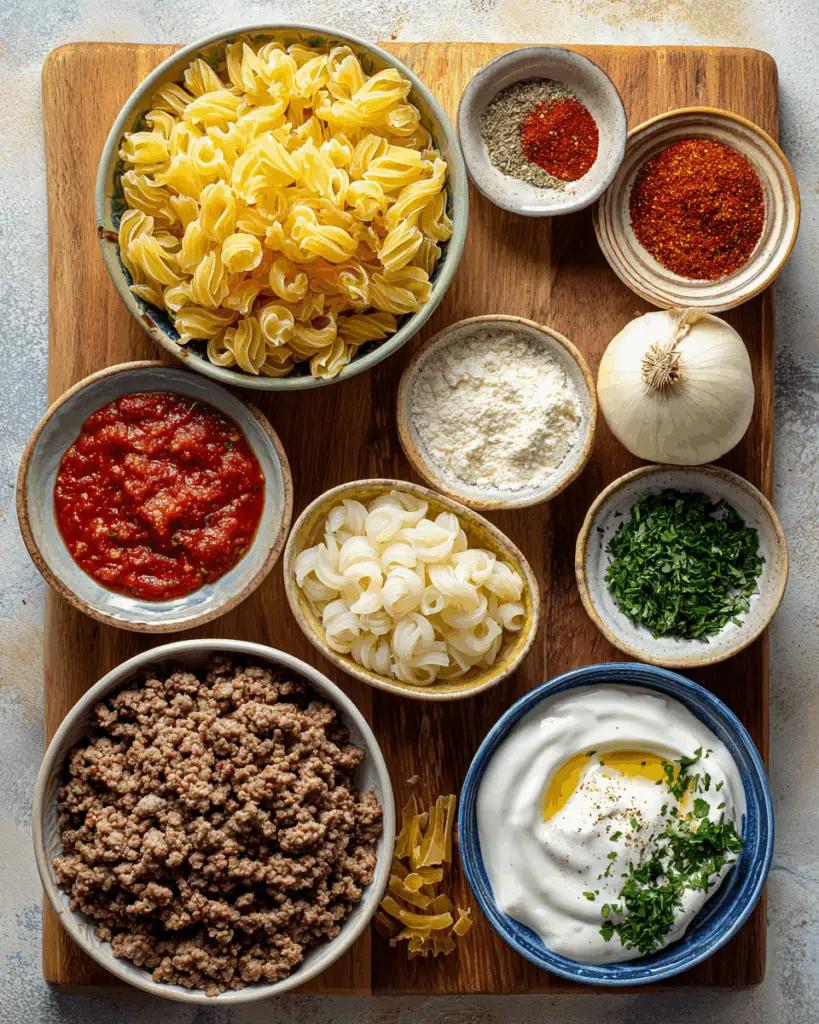
Full Ingredients List & Preparation Table
| Ingredient | Quantity | Notes |
|---|---|---|
| Pasta of choice | 8 ounces | Short shapes recommended |
| Lean ground beef | 1 pound | |
| Onion powder | 2 tablespoons | |
| Yellow onions, diced | 2 medium | |
| Tomato paste | 1 tablespoon | |
| Sweet paprika powder | 2 teaspoons | |
| Salt and pepper | To taste | |
| Unsalted butter | 1/4 cup | For butter sauce |
| Olive oil | 2 tablespoons | For butter sauce |
| Dried or fresh mint | 1 teaspoon | For butter sauce |
| Mild pepper paste | 1 tablespoon | For butter sauce |
| Turkish chili flakes | 1 teaspoon | For butter sauce |
| Greek yogurt | 1 cup | For yogurt sauce |
| Garlic cloves, minced | 2-3 small | For yogurt sauce |
| Cherry tomatoes, diced | 1/2 cup | To garnish |
| Parsley, minced | 1/4 cup | To garnish |
Detailed Cooking Instructions with Pro Tips

- Boil the pasta: Cook 8 ounces of pasta according to the package instructions. Drain and keep warm.
- Sear the beef: In a large skillet over medium heat, add 1 pound of lean ground beef. Sear until just browned, about 2–3 minutes. No extra oil needed—the beef provides its own.
- Add aromatics: Add 2 diced yellow onions, 2 tablespoons onion powder, 2 teaspoons sweet paprika powder, 1 tablespoon tomato paste, salt, and pepper. Cook until the onions are translucent and everything is fragrant—about 3 minutes. Remove from heat.
- Make the butter sauce: In a small saucepan over low heat, melt 1/4 cup unsalted butter. Stir in 2 tablespoons olive oil, 1 tablespoon mild pepper paste, 1 teaspoon dried mint, 1 tablespoon sweet paprika, and 1 teaspoon Turkish chili flakes. Warm for about 1 minute, then remove from heat.
- Prepare the yogurt sauce: In a bowl, combine 1 cup Greek yogurt, 2–3 minced garlic cloves, salt, pepper, and a splash of water to reach your preferred consistency. Mix until smooth.
- Assemble the dish: Place the cooked pasta on a plate or wide bowl. Spoon the yogurt sauce over the top, layer with seasoned beef, and drizzle the hot butter sauce all over.
- Garnish: Top with chopped parsley and diced cherry tomatoes. Serve immediately.
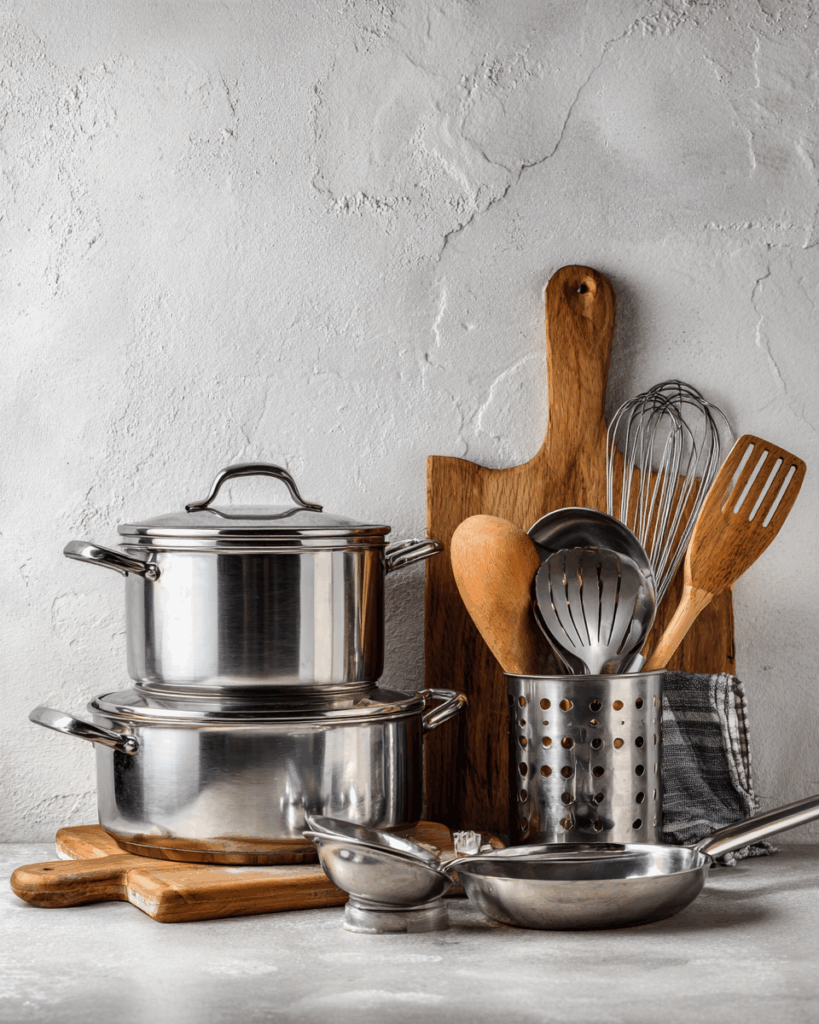
Don’t miss our quick video walkthroughs for even more Turkish pasta TikTok ideas and tips.
Sauces That Make Turkish Pasta Irresistible
Yogurt Sauce: The Creamy Companion
Yogurt sauce is the soul of every Turkish pasta recipe. Its cool, garlicky tang enhances the spices and balances the richness of beef and butter. Always use thick, plain Greek yogurt for the best texture, and add a splash of water to thin if necessary. Don’t be shy with the garlic—two to three small cloves is the sweet spot, but adjust to your preference.
Signature Turkish Butter Sauce Explained
The butter sauce that tops Turkish pasta is legendary. Melted butter and olive oil are combined with sweet paprika, mint, and chili flakes, then poured hot over the finished dish. This final step is what makes Turkish pasta shine—every bite is coated in flavor and just a touch of heat. To impress your guests, pour the butter sauce tableside so everyone gets the full sensory experience.
Looking for inspiration? Try adding a swirl of roasted tomato or red pepper puree to the butter sauce for even more depth.
Serving and Presentation Tips for Turkish Pasta
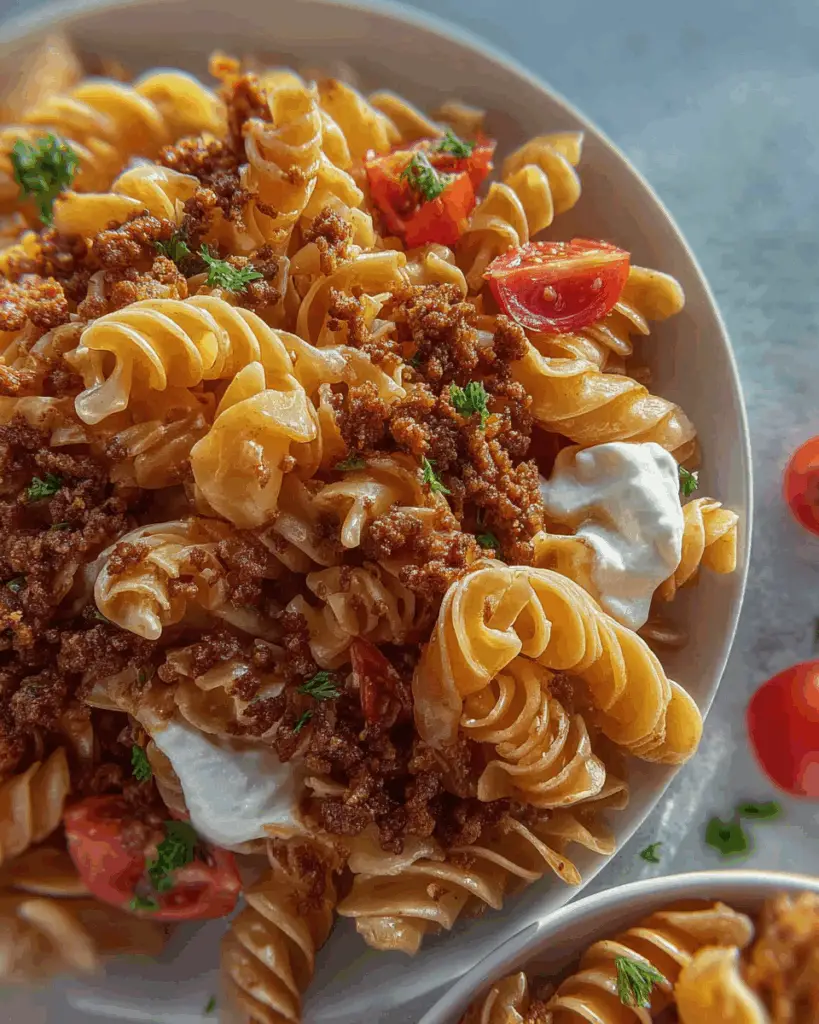
Traditional Garnishes and Plating
When it comes to serving, Turkish pasta is all about generosity and beauty. Garnish liberally with chopped parsley and diced cherry tomatoes for color and freshness. Present your Turkish pasta recipe in a deep platter or bowl so the sauces can pool and mingle.
Turkish Pasta for Gatherings and Family Meals
Sharing is at the heart of Turkish dining. Turkish pasta is made for family-style service: set out the components and let everyone build their plate to taste. For festive occasions, serve with a crisp green salad and fresh bread to mop up every last drop of sauce. Looking for inspiration? Try themed Turkish pasta nights featuring both classic manti and quick skillet variations for all ages.
Explore our collection of Turkish and Mediterranean favorites for even more ideas.
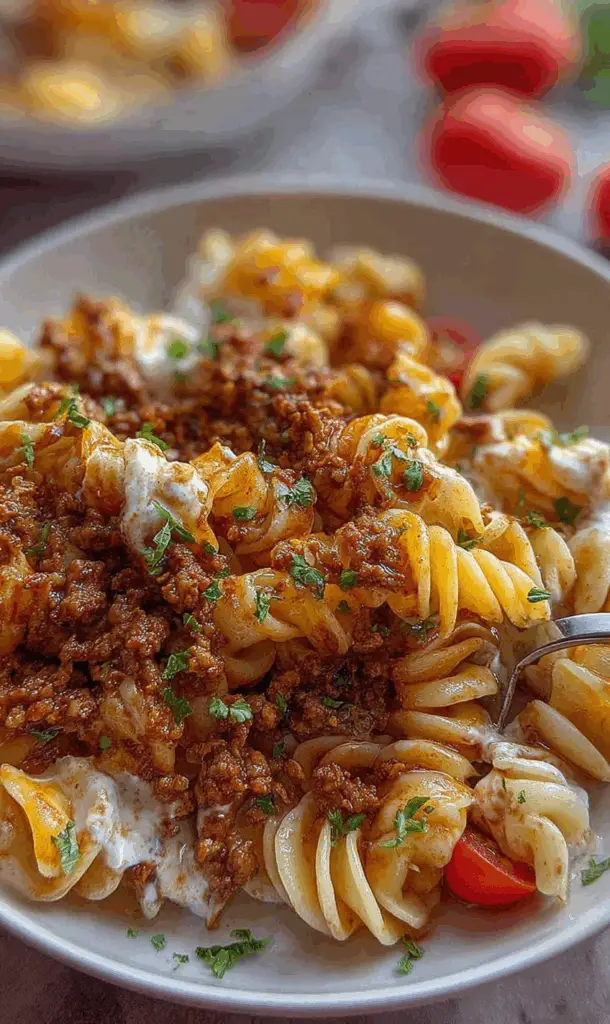
People Also Search For—Expanding Your Turkish Pasta Repertoire
Online searches for Turkish pasta are booming, especially for terms like “Turkish pasta recette,” “Turkish manti,” and “Turkish pasta TikTok.” Want to branch out? Here are a few next steps:
- Try Turkish Pasta Recette Variations: Replace beef with lamb, try vegetarian or vegan options, or experiment with different spice blends. Turkish pasta is endlessly flexible.
- Make Manti Pasta from Scratch: Embrace the manti Turkish recipe tradition by folding tiny dumplings for a show-stopping meal. Manti can be boiled, steamed, or baked.
- Explore Turkish Pasta TikTok Trends: Find viral video recipes for skillet manti, spicy noodle casseroles, or even Turkish pasta frittatas. Social media is a goldmine for inspiration.
Check out our Turkish manti guide and don’t miss the viral Turkish pasta TikTok trends for even more ways to enjoy this beloved dish.
Conclusion
Bringing a Turkish pasta recipe to your kitchen isn’t just about the flavors—it’s about the joy of sharing, the beauty of simple ingredients, and the excitement of discovering something new. From the first forkful of yogurt-draped noodles to the last bit of spiced butter, Turkish pasta recipe will make you a believer. Whether you’re cooking for your family, hosting friends, or going viral with a Turkish pasta TikTok creation, this dish is sure to become a staple at your table.
Looking for more inspiration? Try our complete Turkish recipes collection and transform your weeknight dinners into a celebration.
FAQ
What is Turkish pasta called?
Turkish pasta is generally known as “makarna,” but the most iconic dish is “manti”—a small, meat-filled dumpling served with yogurt and spiced butter sauce.
Why is Turkish pasta so good?
Turkish pasta is a harmony of savory, tangy, and aromatic flavors, all layered for maximum enjoyment. The combination of tender pasta, seasoned beef, cool yogurt, and spiced butter sauce is simply unforgettable.
Is Turkish pasta healthy?
Yes! Turkish pasta can be balanced and nourishing, with lean protein, probiotics from yogurt, and plenty of fresh herbs and vegetables. Opt for whole grain pasta for extra nutrition.
Is Turkish pasta spicy?
Generally, Turkish pasta is only mildly spicy, with most of the heat coming from chili flakes and pepper paste. Adjust the spice level to suit your taste.

